GUEST BLOGGER DEBRA KEMPF SHUMAKER
In PECULIAR PRIMATES, kids learn strange ways some primates look or act. In this lesson, kids will learn how primates are different from other mammals and why they have unique adaptations. The activities span the science, language art, and geography curricula.
Pre-reading discussion
- Who can name a primate?
- What features do all primates have in common?
Tell the students to pay attention to the text and illustrations to see if they can find out what makes a primate a primate!
Post-reading activities
Science: Primates and taxonomy
In the beginning of PECULIAR PRIMATES, students learn: “All primates climb and breathe in air. They have big brains and hands and hair.”
In the back matter, it explains that primates, including humans, are mammals.
Taxonomy helps scientists groups living things by common features.
In the animal kingdom, mammals are a class of animals, primates are an order in the mammal class, and within the order of primates are species.
First, start with mammals. Ask your students what they think all mammals have in common.
Draw a two-column chart. Fill in the first column with their answers/your own answers:
| Mammals Have In Common | Primates Have in Common |
| Fur or hair | Features from first column |
| Breathe air | Big brains |
| Backbones | Climb |
| Four legs (most, but not all) | Two arms/hands and two legs/feet |
| Babies drink milk from mother | Opposable thumbs (most) |
| Most born as live young | Most spend some time in trees. |
| Warm-blooded | Forward-facing eyes |
Next, ask your students what features primates have that make them different from other mammals?
List answers in second column of the chart. (Many are listed in the back matter, you may need to fill in the rest.)
Finally, have the class name various animals. Using the chart, decide if the animal is a mammal. If it is, use the chart to decide if that animal is also a primate.
Science—Adaptation sort
The back matter of PECULIAR PRIMATES states there are more than 350 species of primates. This book focuses on strange adaptations that some primates have. Most of these adaptations help the primate defend itself, attract a mate, hunt/eat, or communicate. (Sometimes adaptations serve multiple purposes.)
Create a chart with five columns. Label the columns as noted below.
Have the students read through the back matter and decide which category each primate’s adaptation belongs in. Some adaptations could fit in more than one category. Some may not be clear from the back matter. If the reason is not listed, have the students hypothesize, then do their own research to see if they can find out why the primate has that particular feature. (Sometimes it may just be the way they evolved!)
Potential Answer Chart
| Defense/Protection | Attract Mate | Hunt/Eat | Communicate | Other/Unknown |
| Cotton-top tamarin’s fancy ‘do | Male proboscis monkey’s large nose | Nocturnal primates’ large eyes | Sportive lemurs using the same latrine | Golden-snub nosed monkey’s blue face |
| Gorilla’s thumping chest | Bald uakari’s red face | Aye-aye’s tapping bark | Gorilla’s thumping chest | Emperor tamarin mustache |
| Slow loris’ toxic bite | Male hamadryus baboon’s fancy ‘do | Old world monkeys storing food in cheeks | Howler monkey’s howl | Japanese macaque soaking/splashing |
| Male mandrill’s colored streaks | Tarsier’s turning head | Titi monkey tail twining | Long-tailed macaque flossing teeth | |
| Great ape’s nest building |
Language arts/geography: Primate acrostic
Have your students spell the word “PRIMATES” vertically. Students should list words or phrases about primates that begin with each letter.
Explain that most non-human primates are found in the tropics and subtropics. Using the book and other resources, have the students create an acrostic poem using countries/continents that primates live in. There are many possible answers.
Further reading and resources
Two recent non-fiction picture books teach different primate facts and behanivors. Check them out!
- HE LEADS by June Smalls
- FOURTEEN MONKEYS by Melissa Stewart
For more Teacher Resources and Educational Activities check out my website: https://debrashumaker.com/peculiar_primates/
The New England Primate Conservancy has fun fact sheets and great activities, too: https://neprimateconservancy.org/lessons-and-activities/
Featured image credit: “Baby gorilla sleeping” by bartdubelaar is licensed under CC BY-SA 2.0.
Debra Kempf Shumaker started reading at the age of four and hasn’t stopped since. She grew up on a small dairy farm in Wisconsin but now lives in the suburbs of Northern Virginia with her husband, three sons, and two cats. When she isn’t reading or writing, she enjoys hiking, gardening, and watching Jeopardy. She is the author of PECULIAR PRIMATES and FREAKY, FUNKY FISH (Running Press Kids) and TELL SOMEONE (Albert Whitman).
Visit her Website, or reach out through Twitter at @ShumakerDebra or Instagram at @debrakshumaker.


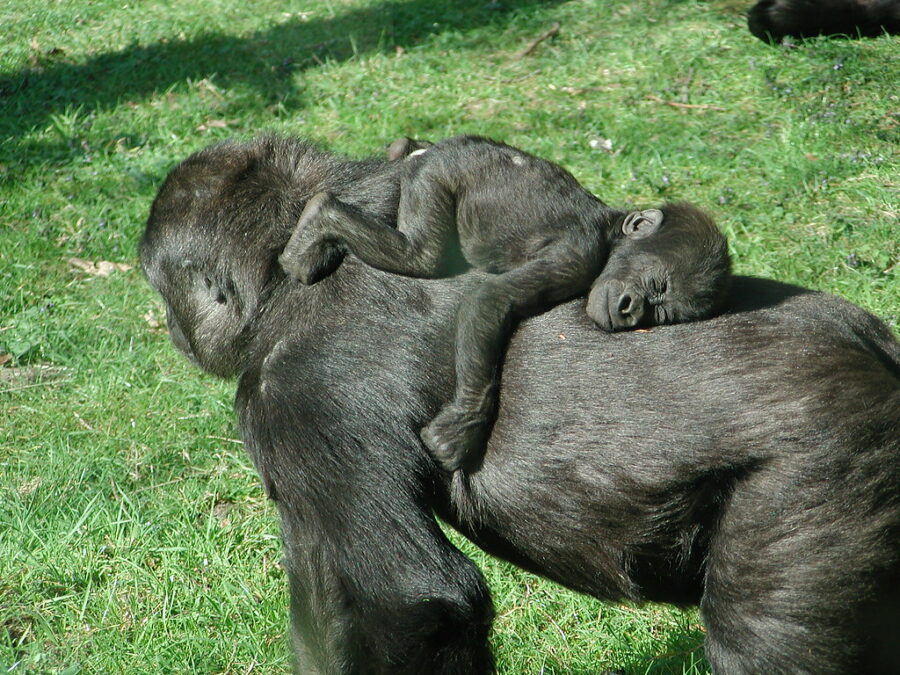

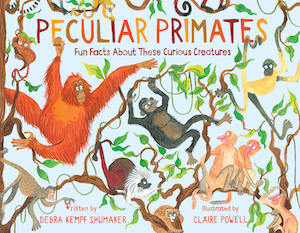
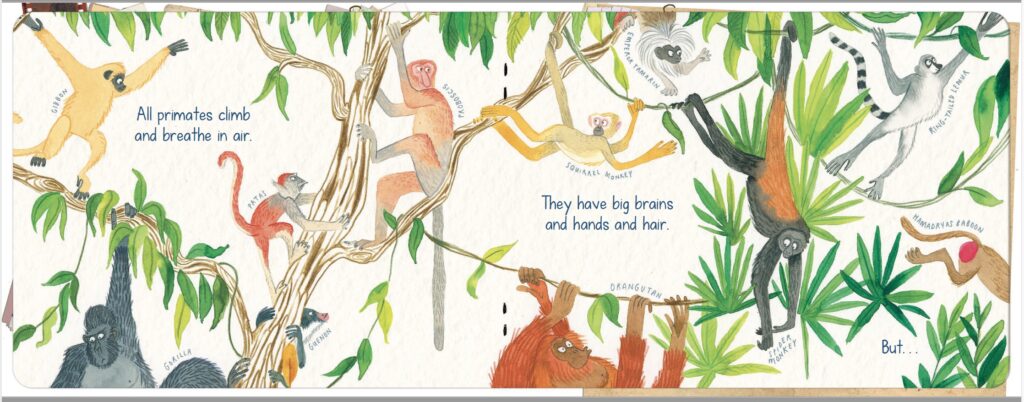
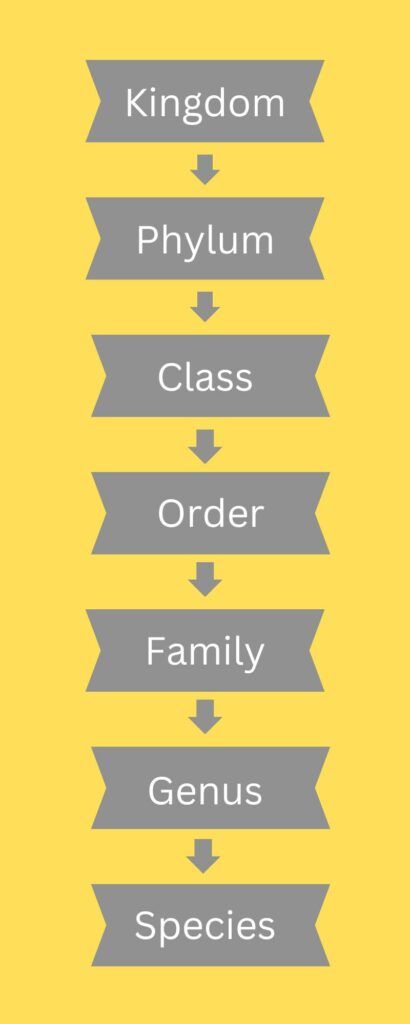
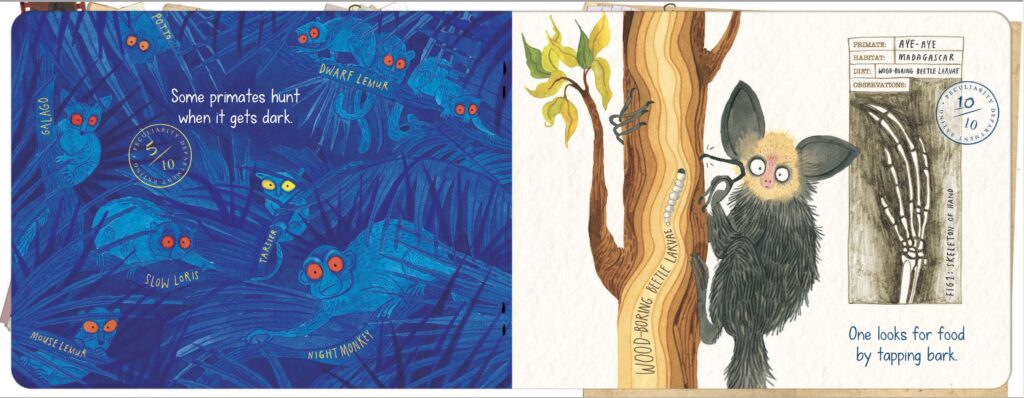


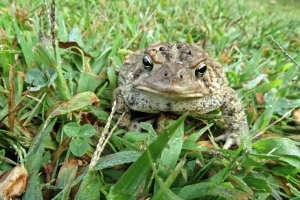
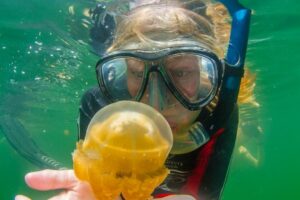


Leave a Reply
Your email is safe with me.